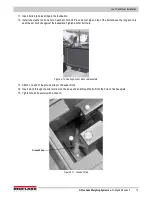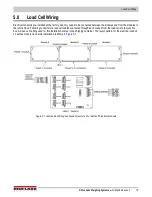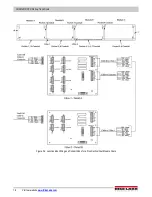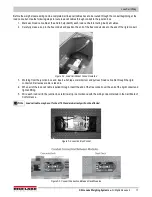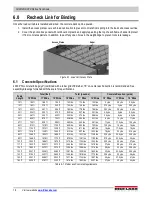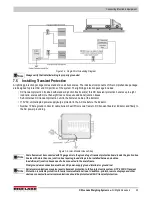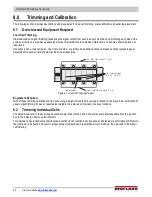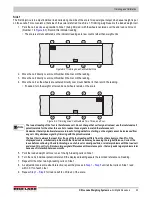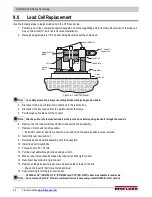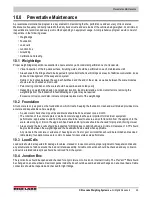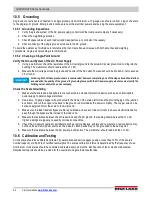
Trimming and Calibration
© Rice Lake Weighing Systems
●
All Rights Reserved
25
Side 1
The first objective is to adjust individual load cells along one side of the scale for equal signal output when equal weight is put
on those cells. For convenience, that side of the scale is referred to as Side 1. Trimming weight used is the loaded weight cart.
1. Park the cart as close as possible to Side 1 (being trimmed) with the wheels centered over the end load cell mount
(Number 1 in
). Record this indicator reading.
• The scale is still uncalibrated, so the indicator readings are raw counts rather than weight units
Figure 8-2. Trimming Load Cell Number One
2. Move the cart directly over mount Number 2 then record the reading.
3. Move the cart directly over mount Number 3 then record the reading.
4. Move the cart so the wheels are centered directly over mount Number 4 then record the reading.
• If needed, turn the weight cart around so all wheels remain on the scale
Figure 8-3. Trimming Load Cell Numbers Two, Three, and Four
The lowest reading of the four is the reference cell. Do not change that cell’s signal. Instead, use the individual cell
potentiometers for the other three cells to reduce those signals to match the reference cell.
Remember that all potentiometers were turned to full signal before starting, so the signal cannot be increased from
any cell. Only decrease signal by trimming with the potentiometers.
The best trim is always the least trim. If one of the four readings differs from the others by more than 5% of the
displayed counts, mechanical problem with that load cell mount may be causing the large difference. Correct the
issue before continuing. Check for binding, an out-of-level or misaligned link, or similar problems with the load cell
and mount. Do not try to trim down large signal differences with resistance pots - that only adds larger problems later
because of interaction between mounts.
5. Park the loaded weight cart over one of the high-reading cells on Side 1.
6. Turn the cell’s individual potentiometer until the displayed reading equals the recorded reference cell reading.
7. Repeat for the other two high-reading cells on Side 1.
8. As adjustments are somewhat interactive, repeat the process in
Step 1 –
until all four cells on Side 1 read
within 0.1% of each other.
Step 1 –
for load cells 5-8 on Side 2 of the scale.
1
4
3
2
8
5
6
7
1
4
3
2
8
5
6
7
Note



